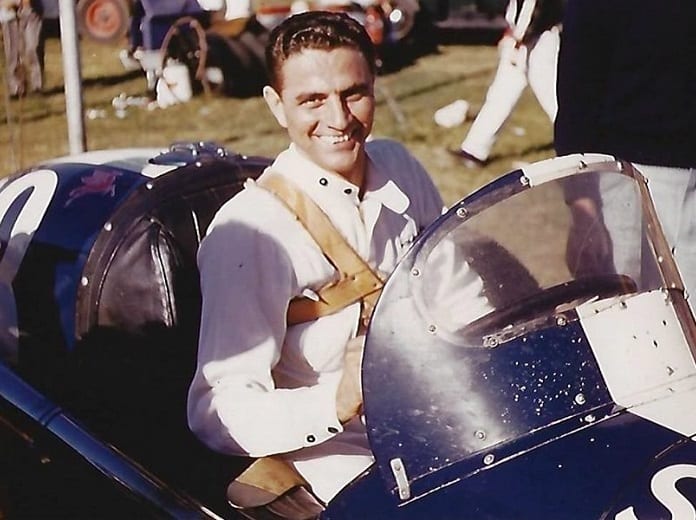Johnny Boyd’s ascent to American open-wheel racing’s top tier happened with the help of two iconic Indianapolis 500 winners — Bill Vukovich and Bob Sweikert.
Born in Fresno, Calif., in 1926, Boyd competed in 11 Indianapolis 500s and dozens of national championship races. Racing was his passion, fueled as a child while watching midget events at Fresno’s Airport Speedway.
“It was right then and there I decided that’s what I wanted to do. Drive race cars,” recalled Boyd, shortly before his death from cancer in 2003.
Watching those races, one name stood above the others to Boyd — Vukovich. It was later Vukovich who gave Boyd his first laps in a race car.
Following WWII, Boyd applied for his United Racing Ass’n probationary license, and while searching for a ride Vukovich’s brother approached the 19-year-old.
“I didn’t know ‘Vuky’ from Adam,” Boyd told journalist Terry Reed. “But his brother, Mike, said to me, ‘Hey, Bubba, you want to drive a race car?’ Try this one.
“I could barely squeeze into the car. It was so tiny and I don’t think I ran 25 mph because I couldn’t turn the steering wheel,” Boyd said. “I took four or five laps, pulled in and Mike patted me on the head and said, ‘OK, Bubba. You did just right. You got back to the pits.’”

At Bill Vukovich’s urging, Edgar Elder offered Boyd a ride. Running at Fresno, Boyd won his first feature and repeated the following week. The third week he was leading when a piston burned. Still, he received his full license.
“I was officially a race car driver,” he chuckled.
Vukovich continued to mentor Boyd. It wasn’t unusual for Vukovich to awaken Boyd at 5 a.m. to go to Madera Speedway or another local track to test. With no one else around, the two would try different cam and carburetor settings, weight-distribution changes and suspension changes.
Boyd consistently improved as a driver. He relocated to San Francisco to run with the Bay Cities Racing Ass’n. There he connected with a driver-turned-mechanic who would become an Indianapolis legend in his own right, George Bignotti.
“I tried Bignotti’s car for five races,” Boyd recalled, “and won them all. Just talking to the guy, you knew he wanted to go all the way. I figured that if I wanted to go all the way in racing, I needed George.”
Running Bignotti’s car, Boyd finished in the top 10 in BCRA points four consecutive years, claiming the championship in 1951 and the indoor championship in ’52.
With that success, friends urged him to go “back east” to run with AAA. Chief among them were Vukovich and Sweikert, who’d befriended him while racing with the BCRA.
Typically blunt, Vukovich told him, “Hell, Boyd you’ve beat all those guys back here, you can beat them back there, too.”
“I admired Vuky a lot,” recalled Boyd. “So I went back in 1952 but fell flat on my face.” Vukovich came through again. “Boyd,” he said, “it’s not you, it’s the car. You can’t quit.”
He didn’t.
Vukovich helped him get a ride in Ken Smith’s potent midget, but an unexpectedly better deal came along.
Boyd agreed to crew for Sweikert on the Lutes Special at Indianapolis in 1954. If he got the car in the show, Lutes promised to buy Sweikert a 220 Offy for his sprint car.
Sweikert made the show and put Boyd in his sprint car with the new engine.
That was the perfect opportunity for Boyd, as sprint cars then were the road to Indianapolis. Boyd got there in 1955.
With Vukovich and Sweikert advising, he put the Sumar Special in the field for what proved to be a dramatic, bittersweet race for the rookie.
He was entangled in the multi-car crash that claimed Vukovich’s life.
“I didn’t see ‘Vuk’ until the first time he lapped me,” recounted Boyd. “He came by and motioned for me to step on the gas. There’s no way I could follow him. He went by so fast he sucked the paint off my car.”
The next time Boyd saw Vukovich, he was outside the track, pinned upside down in his burning car.
Sweikert won that tragic 500.
“Talk about mixed emotions. It was a roller coaster. But, well, that was racing,” Boyd said. “We accepted it and went on.”
